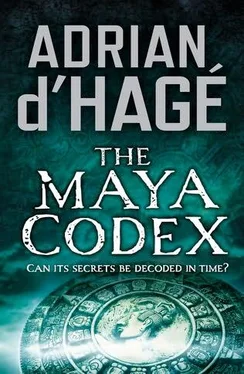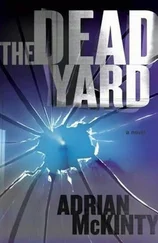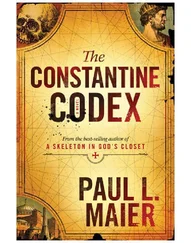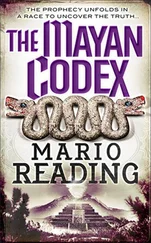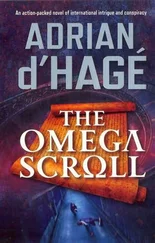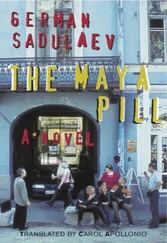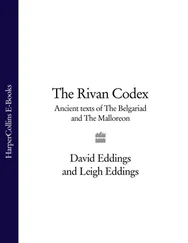Adrian D'Hage - The Maya codex
Здесь есть возможность читать онлайн «Adrian D'Hage - The Maya codex» весь текст электронной книги совершенно бесплатно (целиком полную версию без сокращений). В некоторых случаях можно слушать аудио, скачать через торрент в формате fb2 и присутствует краткое содержание. Жанр: Политический детектив, на английском языке. Описание произведения, (предисловие) а так же отзывы посетителей доступны на портале библиотеки ЛибКат.
- Название:The Maya codex
- Автор:
- Жанр:
- Год:неизвестен
- ISBN:нет данных
- Рейтинг книги:3 / 5. Голосов: 1
-
Избранное:Добавить в избранное
- Отзывы:
-
Ваша оценка:
- 60
- 1
- 2
- 3
- 4
- 5
The Maya codex: краткое содержание, описание и аннотация
Предлагаем к чтению аннотацию, описание, краткое содержание или предисловие (зависит от того, что написал сам автор книги «The Maya codex»). Если вы не нашли необходимую информацию о книге — напишите в комментариях, мы постараемся отыскать её.
The Maya codex — читать онлайн бесплатно полную книгу (весь текст) целиком
Ниже представлен текст книги, разбитый по страницам. Система сохранения места последней прочитанной страницы, позволяет с удобством читать онлайн бесплатно книгу «The Maya codex», без необходимости каждый раз заново искать на чём Вы остановились. Поставьте закладку, и сможете в любой момент перейти на страницу, на которой закончили чтение.
Интервал:
Закладка:
‘Thank you, Mr President,’ Jennings replied, moving to the lectern. ‘As a Fellow of this society, it is an honour to be able to update everyone on my latest research.’ His garish yellow bow tie clashed alarmingly with his dark-red shirt. Monsignor Jennings not only had bizarre dress sense, O’Connor thought, he had a body to match. A large, portly man with a ruddy face, Jennings parted his thinning red hair down near his left ear, sweeping it up in heavily greased strands over a bald, pink pate. He wore thick black glasses on the end of a bulbous nose. His watery blue eyes were restless and his heavy, unkempt bushy red eyebrows seemed to defy gravity.
‘There has been a great deal of alarmist speculation in the media about a coming cataclysm, including, apparently, a collapse of the earth’s magnetic field and an increase in sunspot activity accompanying a pole shift in 2012. All this has been supposedly predicted by the ancient Maya,’ he began, pointedly looking over the top of his glasses towards the media contingent.
‘I’ve always been of the view that those who espouse this nonsense know nothing of the true nature of the ancient Maya. Far from being an educated, spiritual people who were in touch with nature, they were amongst the most ignorant and bloodthirsty people in the entire history of mankind. The Maya make Attila the Hun look a very suitable candidate for the boys choir in this very city. I’ve spent a lifetime researching this primitive civilisation, and in the past year I’ve had access to some exciting new hieroglyphs recovered from a recently discovered tomb in Tikal.’ Jennings flicked on a PowerPoint presentation and a series of images appeared on a screen suspended from the ceiling. ‘These stelae – for those at the back of the room, stone monuments on which the Maya engraved their complex messages in glyphs – clearly show the daily life in a Mayan city in all its gruesome detail. Stela One, shown here, depicts the mass rape of young boys and girls. Quite commonplace.’ Jennings sniffed haughtily. ‘Stela Two, which was discovered in thick jungle north-east of Tikal, clearly shows the absolute disregard for human life so typical of the Maya, who thought nothing of ripping still-beating hearts out of their captives’ chests, in grisly and macabre sacrifices to their pagan gods.’
As the lecture ground on, O’Connor noticed that Aleta was studying the Jesuit priest with intense interest. At times she quietly shook her head, her full lips pursed in a thin angry line. Was it the savagery of the Maya, or the Monsignor’s interpretation that had angered her? O’Connor breathed a sigh of relief when Jennings brought his dissertation to a close and the society’s president invited questions from the floor.
‘I note with interest your description of the Maya as ignorant and bloodthirsty, Monsignor.’ The voice held a distinct authority. ‘No one would deny that sacrifice was part of Mayan ritual, but I would suggest that it took place very much in the late post-Classical period and was linked to the warlike Aztecs and Toltecs to the north. Sacrifice was most often associated with war, and if we compare the Mayan propensity for fighting with our own readiness to wage war, I would put it to you that they were somewhat less bloodthirsty than we are.’
O’Connor grinned. There was a delightful Spanish lilt to Aleta’s accent and her English was perfect. The eminent Jesuit priest looked furious.
‘Not only that, the Maya were often known to settle their differences with their ancient ball-court game, rather than resorting to war, as we so often do. As to their gods, it seems to me that most of humankind’s wars have at their base, disagreements in religious outlook: Islamic fundamentalists and terrorism, the Catholics and the Protestants in Northern Ireland, the President’s claim that God told him to invade Afghanistan, Iraq, right back to the Crusades… I would suggest that far from being the ignorant race you have described, the Maya were responsible for some of the greatest achievements in astronomy and architecture, as well as being possessed of a deep spirituality; a belief that a spiritual force is clearly present in every aspect of the natural world.’
O’Connor could sense the anticipation of the media pack. Several journalists and cameramen were grinning broadly. The pompous Jesuit priest had at last been challenged by someone other than their own.
‘Who’s she?’ one journalist whispered.
‘Dr Aleta Weizman,’ a journalist from The Times replied. ‘A Guatemalan, but her grandfather lived and worked in Vienna. She’s well on her way to being just as famous as he was.’
‘I must say, I’m surprised, Dr Weizman, that your assessment doesn’t demonstrate a more scholarly approach. Then again, you’re a woman, and you haven’t enjoyed the untrammelled access to ancient artefacts that is afforded to scholars of my standing.’ Jennings sniffed again.
O’Connor watched the exchange with interest. To the outside world Aleta Weizman might be an obscure archaeologist, but she was obviously known to the Monsignor, and to some of the journalists.
‘Why so surprised, Monsignor?’ the Times journalist challenged in support of Aleta. ‘Are you denying the ancient Maya’s ability to chart the movement of the planets? And are you suggesting we should ignore the alignment of those planets in 2012?’
‘That mystical nonsense is entirely overblown. I predict without a shadow of a doubt that 21 December 2012 will have as much effect on our planet as Y2K – another date you media people played for all it was worth.’
‘You yourself have admitted that the Maya also warned that a geographical or magnetic pole shift would be associated with increased sunspot activity,’ a journalist from Montreal’s Gazette said. ‘Some scientists, including those at NASA, have confirmed the Mayan predictions of a massive peak in sunspot activity in 2012, and there’s evidence we’re already experiencing increasingly violent solar storm activity. Two years ago solar storms brought down the entire electrical grid in Quebec. Long-range radio communications and GPS navigation satellites were crippled and aeroplanes had to be rerouted to avoid the worst of it. Don’t you think if an ancient civilisation had advanced knowledge of what might happen in 2012, we should at least explore what that might mean?’
‘Increased sunspot activity is nothing new,’ Jennings responded irritably.
‘There’ve been persistent rumours over the years of a missing Maya Codex, Monsignor.’ The young journalist from Women’s World seized her opportunity to turn the conference in a direction her readers might find more interesting. ‘A codex that might give us advance warning of a catastrophe… one that might enable some of us to survive. Do you place any credence in these reports?’
‘This so-called Maya Codex is nothing more than a figment of the media’s imagination,’ Jennings snorted and waddled over to a large whiteboard. ‘Unfortunately most of the records of the ancient Maya were burned during the Spanish invasion. The few codices that survived, the Dresden Codex, the Madrid Codex and the Paris Codex – named after the cities in which they now reside – as well as the Grolier fragment, were produced on huun, the Mayan paper produced from the bark of the Ficus continifolia or Ficus padifolia, the largest of the strangler figs.’ The journalist from Women’s World turned to her photographer and crossed her eyes.
Jennings continued, ‘ Huun being far more durable than the papyrus from ancient Egypt, I have had the rare distinction, the very rare distinction, of being able to study all the originals at first hand. Of the four, the Dresden Codex is the one that sheds most light on these bloodthirsty savages who would think nothing of sacrificing their own children, throwing them into the cenotes, the sink holes on the Yucatan Peninsula that connect with underground rivers. And while these codices have undoubtedly helped in deciphering the savagery of the Maya, there are no references to any forthcoming catastrophe – none whatsoever,’ Jennings concluded decisively.
Читать дальшеИнтервал:
Закладка:
Похожие книги на «The Maya codex»
Представляем Вашему вниманию похожие книги на «The Maya codex» списком для выбора. Мы отобрали схожую по названию и смыслу литературу в надежде предоставить читателям больше вариантов отыскать новые, интересные, ещё непрочитанные произведения.
Обсуждение, отзывы о книге «The Maya codex» и просто собственные мнения читателей. Оставьте ваши комментарии, напишите, что Вы думаете о произведении, его смысле или главных героях. Укажите что конкретно понравилось, а что нет, и почему Вы так считаете.
